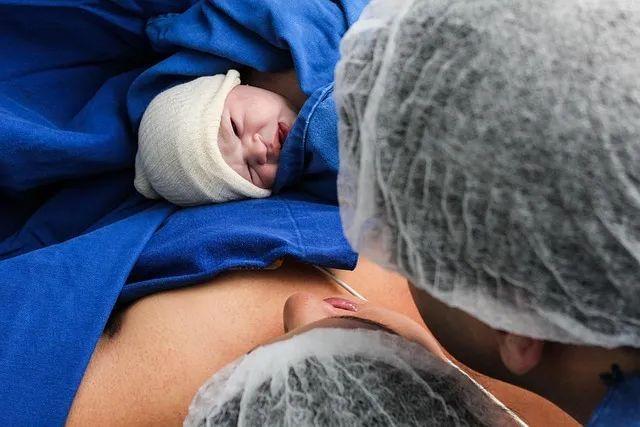Three-Generation IVF: $20,000 More to Block 90% Risk of Fetal Abortion

When Caitlin saw the double bar on the pregnancy test for the third time, her hands couldn’t stop shaking – the shadow of the last fetal arrest was still following her.
But this time, on the ultrasound screen at week 7 post-transfer, a strong fetal heartbeat announced that the chromosomally normal embryo had firmly taken root.
🧬 I. The brutal truth of repeated failure: chromosomal abnormality is an invisible killer
Repeated implantation failure (RIF) families suffer not only financial pressure, but also the psychological trauma of constantly broken hopes. Clinical data show that 60% of fetal arrests are due to chromosomal abnormalities in embryos, and the percentage climbs to 75% in women over 38 years of age39 .
The “blind selection” dilemma of traditional in vitro fertilization (IVF)
Limitations of Morphologic Evaluation: Even embryos that are rated as “high quality” in appearance may still carry chromosomal abnormalities. According to Dr. Emily Thompson of the Harvard Fertility Center, “Grade AA blastocysts still have a 30% chance of having aneuploidy, which is the main cause of recurrent fetal arrest.
The grim statistics for older women:
✅ Over 65% of embryos have chromosomal abnormalities in women over 40
✅ Risk of spontaneous abortion is as high as 80% after age 45.19
Clinical observation by Dr. Robert Harrison of the Center for Reproductive Science in London hits the nail on the head: “Many families spend hundreds of thousands of dollars on repeated transfers, only to discover that the root cause lies in those who abnormal chromosomal embryos beneath the ‘perfect exterior’.”
🔍 Second, three-generation in vitro technology: accurate sniping chromosomal abnormalities of the “gene guard”
Third-generation test tube (PGT) contains two core technologies, which are like installing a “genetic radar” for embryos. 1:
1. PGS technology: chromosomal abnormalities have no place to hide
Full Chromosome Scanning: analyzing the number and structure of 23 pairs of chromosomes, with a detection rate as high as 98%
Breakthrough Application: According to the data of Guangzhou Zhongshan Hospital, the pregnancy rate of PGT has jumped from 23% to 65% for women of advanced age.
2. PGD technology: the end of single gene diseases
Accurate screening for 297 genetic diseases such as thalassemia and spinal muscular atrophy
California Reproductive Center case: Huntington’s chorea family blocked the disease-causing gene through PGT, and the rate of healthy live births reached 89%
3. Technology Upgrade: Non-Invasive Embryo Screening (NICS)
The latest clinical practice in 2025 shows that by analyzing free DNA in the culture fluid:
Avoiding traditional biopsy damage to the embryo
Over 95% accuracy in detection of aneuploidy
Shortening the screening cycle to 48 hours
📊 III. A $20,000 return on investment: the amazing value behind the costs
| Cost comparison items | Traditional In Vitro Cycle | Triple IVF cycle | Value difference |
|---|---|---|---|
| Single-cycle base cost | $30,000-$50,000 | $50,000-$70,000 | +$20,000 |
| Average number of transplants | 3.2 times | 1.5次 | 53% reduction |
| Cumulative costs (including failures) | $150,000-$180,000 | 70-90 thousand dollars | Savings of $80,000 to $110,000 |
| Fetal Abortion Clearance Surgery Fee | 12,000/times | Approaching 0 | Avoiding physical and psychological trauma |
More critical hidden value:
Surrogate mother’s physical protection: reduce the risk of uterine adhesions and infections caused by repeated miscarriages
Fertility window: for every year of delay for women over 38, the live birth rate decreases by 24%
Psychological costs: 92% of patients with RIF experience more than moderate anxiety, and three-generation IVF dramatically reduces treatment uncertainty
🌟 IV. The Clinical Revolution of Triple IVF: Transformation from Failure to Success
Case 1: Caitlin’s path to breakthrough
Background: 37 years old, 3 transplants with fetal arrest (chromosome 16 trisomy, 22 trisomy)
Program: PGT-A screening yielded 2 aneuploid blastocysts
Result: single transfer success, delivery of a healthy baby boy
Doctor’s comment: “Her embryos’ surface scores were all AA, but the chromosomal abnormality rate was 80% – -This is the blind spot of morphological evaluation.”
Case 2: Landmark Study at Fujita Hospital, Japan
Analysis of 554 frozen embryo transfers revealed:
Non-high-quality embryos (BB grade) with 144 hours of luteal support
65% higher pregnancy rate compared to conventional protocols
Live birth rate increased by another 40% after combined PGT
💡 V. Precise strategies to maximize the benefits of three-generation IVF
1. Applicable population screening gold standard
✅ ≥2 failed transplants
✅ Advanced age (normal ovarian reserve)
✅ Either spouse carries a gene for a genetic disease
✅ Severe male factor infertility
2. Technological combinations to enhance the success rate
Blastocyst culture + time-lag imaging technology: screening embryos with the highest development potential
Endometrial tolerance assay (ERA): finding the window for implantation
Immunomodulation therapy: counteracting surrogate mother’s maternal rejection (e.g., excessive NK cell activity)
3. Health Care Policy Smart Applications
New national health care regulations for 2025:
12 assisted reproductive technologies included in reimbursement (70% reimbursement in Beijing/Shanghai)
Genetic testing costs not yet covered, but some provinces and cities subsidize 30%
Smart application of hierarchical diagnosis and treatment: grassroots primary screening + tertiary core operation, saving 20% of costs
🌍 VI. Global technological frontier: the future of three-generation in vitro is here
1. Artificial Intelligence Embryo Rating System
Dynamic analysis of 72-hour embryo development images
Predicts chromosomally normal embryos with 90% accuracy
Reduces 50% of unnecessary biopsies
2. Mitochondrial transfer technology
Targets the energy deficit caused by egg aging
Cambridge clinical trial: 35% improvement in embryo quality scores
3. Global Clinical Guideline Innovation
UK HFEA: Recommend mandatory PGT-A for women ≥38 years old
US ASRM: Blastocyst culture + PGT preferred for repeated failures
Japan Society for Reproductive Medicine: 144 hours of luteal support included in guidelines
❤️ Action guide for families with recurrent failed transplants
Genetic testing first: make sure to perform embryo chromosome testing after miscarriage to clarify whether it is caused by an abnormality
Choose CAP/CLIA accredited labs: ensure the accuracy of PGT results (error rate <0.1%)
Optimization of luteal support: oral dexprogesterone for at least 144 hours, synchronized with implantation window
Surrogate mothers Maternal Pretreatment:
Vitamin D Supplementation (serum level >40ng/ml)
Mediterranean Diet Reduced inflammatory index
Pelvic floor blood flow training to improve uterine perfusion
Dr. Lisa Miller of the Boston Center for Reproductive Science concludes, “The $20,000 for triple IVF is not an additional cost, but rather an insurance policy to circumvent repeated failures. It addresses not only fertility issues, but the rebuilding of a family’s faith in the transmission of life.”
The birth of life requires the dual escort of science and faith. When the chromosome screening technology for the embryo to light up the green light to go forward when the surrogate mother mother’s body environment in the precise regulation of the best state, those who had been judged “hopeless” fertility journey, will finally usher in the dawn of the newborn cry.
The choice at this moment is not only about the fate of an embryo, but also for countless dreams that might have been extinguished, renewing the chapter of life.






